2011 Hyundai Sonata 2.0T – Click above for high-res image gallery
We've watched with a sense of awe as Hyundai has gone from a discount also-ran brand into a genuine industry powerhouse in startlingly short order. But we've also long suspected that its vehicles have gained so much ground by being among the best values in their respective segments – not because they've necessarily been the best vehicles to drive. The addition of the Genesis Coupe may have served notice that Hyundai isn't content to just be the industry's value leader (see Battle of the Sixes), but the keystone draw of most of the brand's offerings has remained their affordability. Which is not to suggest this is a bad thing – Hyundai's steroidal growth speaks to the inherent soundness of its strategy. But as enthusiasts, we've been waiting for the company to not only out-value, but to categorically outsmart and outplay its rivals. With introduction of the 2011 Sonata, Hyundai appears to have done exactly that.
The Sonata has proven to be far more than just a styling stunt.
We admit that we weren't sure whether the Sonata's outré styling would play in that most milquetoast of markets: the family sedan segment. When the sheet was pulled on the 2011 model, it was as if Hyundai had strolled into a Sunday morning prayer breakfast with Kathy Griffin on its arm – we didn't know exactly what was going to come of it, but we knew it was going to be fun to watch. Thankfully, the Sonata has proven to be far more than just a styling stunt. Packing big space, a rock-solid chassis, accomplished handling and unmatched power and fuel economy from its 2.4-liter four-cylinder engine, the Sonata has gained widespread acceptance and acclaim in a historically conservative slice of the market.
But while the normally aspirated sedan got our attention, the promised 2.0-liter turbocharged model had our enthusiast hearts bound up in anticipation. The specifications revealed at this spring's New York Auto Show were enough to have visions of a proper cut-rate sport sedan dancing in our heads: 274 horsepower and 269 pound-feet of torque plunked into a chassis that's among the very lightest in its class. So when Hyundai invited us to hop a plane to Seoul to sample their new force-fed family schlepper, we had our bag packed and were at the airport before you could say "pass the Kimchi."
The Sonata 2.0T's new Theta II engine is obviously the main attraction here, and it deserves top billing because it's loaded with meaningful tech. Hyundai has utilized costly bits like a twin-scroll turbo and an electric wastegate actuator, the latter of which precisely governs boost pressure to improve efficiency and trigger quicker exhaust catalyst light-off for reduced emissions. All-in, the package is good for a staggering 137 horsepower-per-liter – a figure that was reserved for motorsport use just a few years ago. To put that metric in proper perspective, the Theta II turbo positively obliterates its rivals in this category, from the 220-hp 2.0T Buick Regal (110 hp/liter) to the 263-hp Ford Fusion V6 (75.1/liter) and everything from Japan Inc. – regardless of their cylinder counts. And it does so while sipping regular fuel. Outsmart and outplay? Check.
Officials tell us that because the company chose to go with a four-cylinder-only lineup, the Sonata's engineers were able to optimize other components because they didn't have to cope with an optional V6 package's larger dimensions and mass. That sort of focus has resulted in a best-in-class weight-to-power ratio of 12.2 pounds per horsepower, a figure just .1 horses shy of Ford's lauded 2011 Mustang V6. Its closest in-class competitor is actually the similarly feathery Nissan Altima V6, which chimes in at a commendable 12.4. Naturally, light weight also pays dividends in fuel economy, so it should come as no surprise that the 2.0T is estimated to return 22 miles per gallon in the city and 34 out on the highway. That's just two mpg shy of the 2.4-liter on the urban cycle and one on the freeway, and both numbers are still well ahead of the competition. Those figures strike us as a small penalty for an extra 76 horses, and besides, the normally aspirated Sonatas we've driven have actually served up fuel economy numbers well above EPA estimates, and we wouldn't be surprised if the turbo manages the same trick.
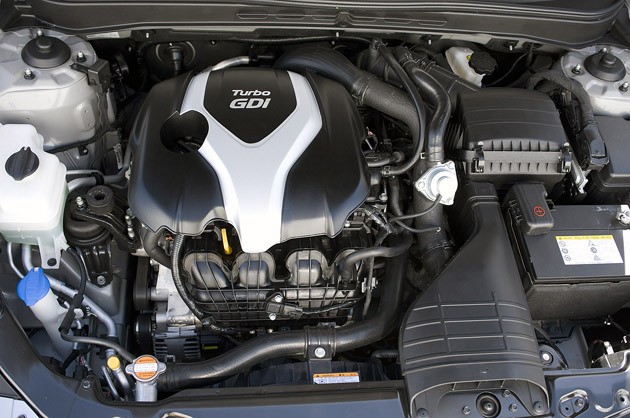
But enough technical talk. How does it drive? Well, our time behind the wheel in Korea was extremely limited and conducted in 2.0T prototypes that didn't yet have their final calibrations dialed-in, so consider these observations to be tentative. We drove Limited-spec models (18-inch alloys, panoramic roof, dual exhausts) on Hyundai's Namyang high-speed banked oval as well as on a handling course, but didn't manage to score any time on the region's public roads, That's just as well, really, as they were traffic-choked to the point of eroding any hopes of actual dynamic assessment.
Like most direct-injection engines (including the naturally aspirated 2.4-liter in the base Sonata), the Theta II turbo doesn't make the most sonorous of noises at tickover, but inside, noise is well controlled in both volume and tone, no matter the speed. All 274 horses gallop in at a rather lofty 6,000 RPM, but the 269 lb-ft of torque pushes in at just 1,800 RPM and hangs out until 4,500 is showing on the tach, at which point the power begins to taper off. Burying the pedal while getting up to speed on the big 2.8-mile bowl, we not only observed strong acceleration that would seem to jibe with Hyundai's 0-60 mph estimate of 6.5 seconds, we also noted impressive high-speed stability at speeds in excess of 140 miles per hour.
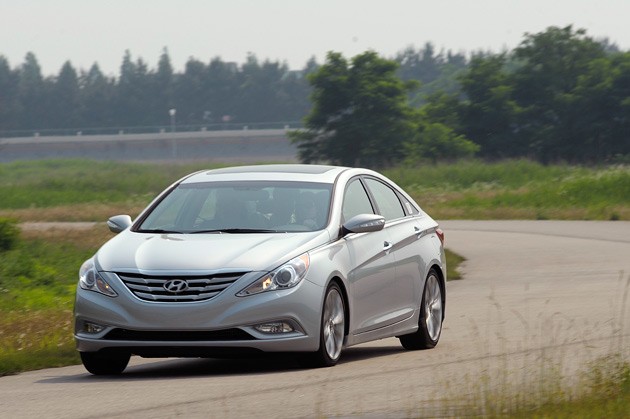
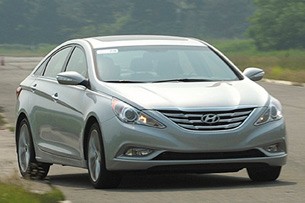
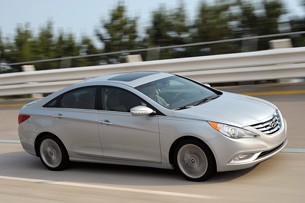
Hyundai's Namyang proving grounds offers more than 45 miles of roads spread out over 34 different test tracks of all varieties, with 71 different types of surfaces. In other words, it's a massive facility – 408 acres of research and development, all in. Beyond the four-lane oval, we were limited to stints on a mid-speed handling course where we found ourselves in the engine's wheelhouse more often than not. Doing so was easy, and not just because Hyundai has fitted the same spoke-mounted paddle-shifters (right tab up, left tab down) used on the 2.4L SE to all turbo Sonatas. There's no Sport mode to cut down on the cog-swap time and nobody is going to confuse the A6LF2 six-speed auto for a quick-shifting dual-clutch unit, but Hyundai's Shiftronic tech is still a useful piece of kit. Left to its own devices, the all-new internally developed six-speed is a model of civility, easily a match of other gearboxes in the class.
Since suspension and steering tuning has yet to be signed off on, it would be imprudent to make sweeping judgments about handling. But so far, we like what we see. With so much power funneled through the front wheels, we were concerned that torque steer would be a real liability, but at least on the track's smooth surfaces, it wasn't a distraction. Even when we intentionally stomped on the gas in a haphazard fashion coming out of the corners to provoke the condition, we didn't notice an objectionable amount of torque steer from the MacPherson strut-suspended front end. Steering effort and feedback is still on the lighter side, but the same thing can be said for most of the Sonata's challengers.
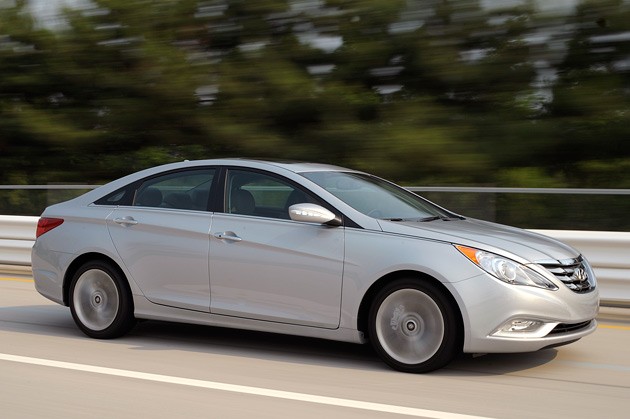
Like the exterior, the cabin of the 2.0T is all but identical to that of the 2.4, which is to say that it offers straight-forward ergonomics, plenty of space and storage, and sadly, surprisingly hard and flat seats. If you're wondering what dining room chairs are doing stuck in a sport sedan, it's because Hyundai doesn't actually have truly athletic aspirations for the 2.0T– it views this model as a straight V6 replacement, not a performance entry. Yes, you will still be able to get the modestly improved dynamics in the 2.0T SE model (monotube shocks, 20 percent firmer springs, larger anti-roll bars and 18-inch performance rubber), but at the end of the day, Hyundai has elected to point the barrel of its bat at the meat of the market, not dish out a red in tooth and claw special that targets a few thousand enthusiasts.
From a business perspective, that's smart thinking, but it also leaves the door open for a more focused future performance variant – something that officials we spoke with refused to rule out. We think there's plenty here to work with: an astute chassis that can clearly handle high-horsepower applications, aggressive styling and a team of talented engineers that has already proven they know how to build a bona fide performance car. Still, the plain-Jane Sonata 2.4 is already at or near the top of the heap dynamically, so if you're getting the impression that the turbo is all soft and squidgy, you've got it wrong. In our brief drive, we noticed no unwelcome additions to the Sonata's dynamic portfolio, so there's really no reason to be disappointed – we've just been left wanting more.
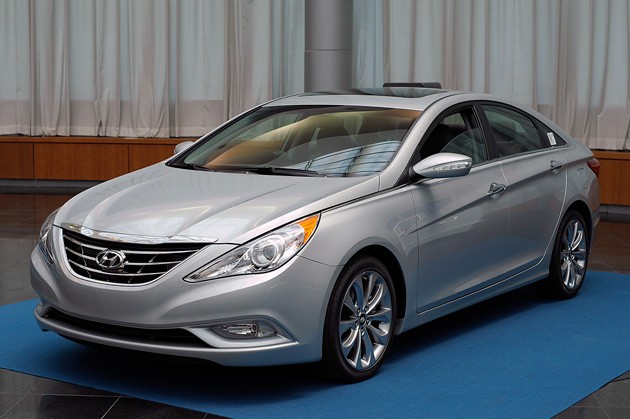
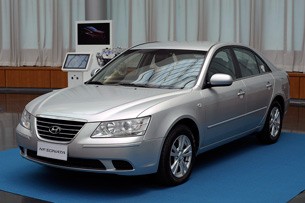
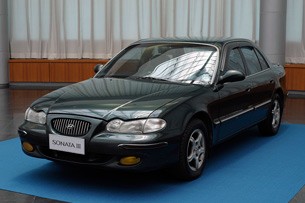
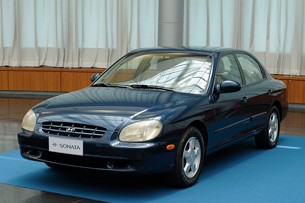
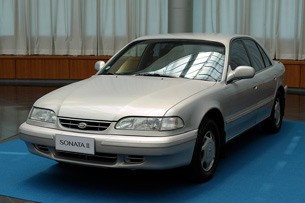
While we'll withhold a firm verdict until we can get a production model back on U.S. soil, for the moment, the Sonata 2.0T appears to be an almost supernaturally accomplished entrant in the family sedan sweepstakes. Daring lines paired with unmatched power and freakishly impressive fuel economy has shown that the Korean automaker isn't afraid to innovate. The 2.0T may not yet be the affordable sport sedan of our dreams, but if Hyundai can deliver on its projected price point of under $25,000, it will add untouchable value to what's already shaping up to be a class-leading proposition. If the Sonata nosed ahead of its rivals when the 2.4 came on the market, this new 2.0T is poised to eclipse them completely. Outsmart and outplay indeed.

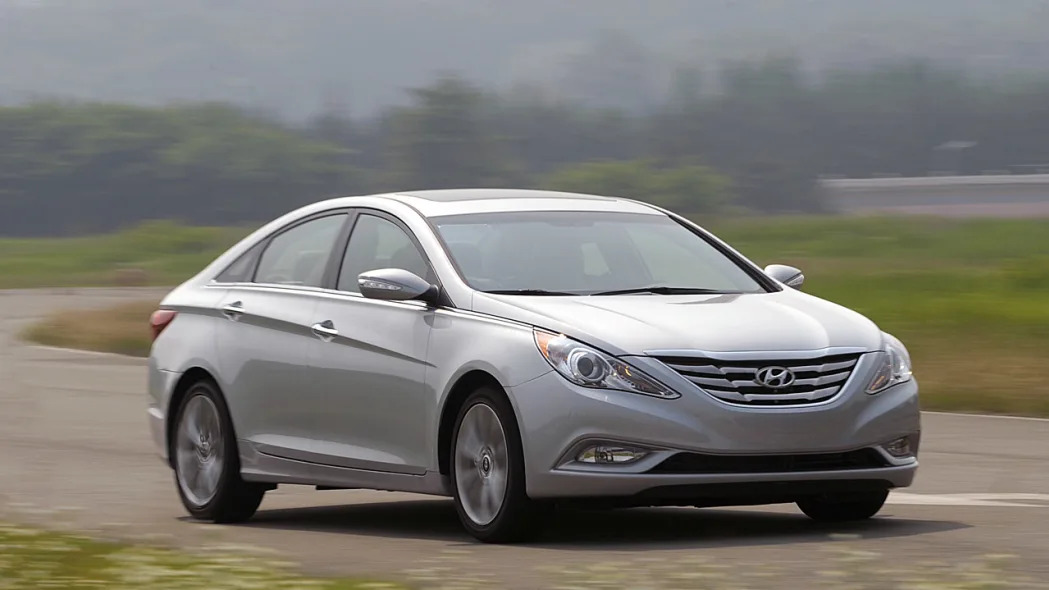

Sign in to post
Please sign in to leave a comment.
Continue